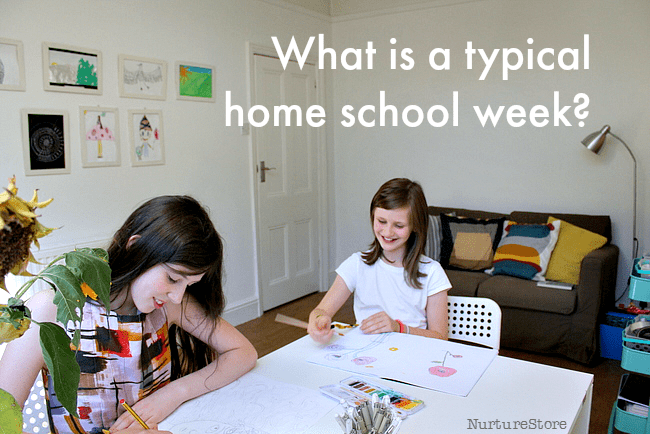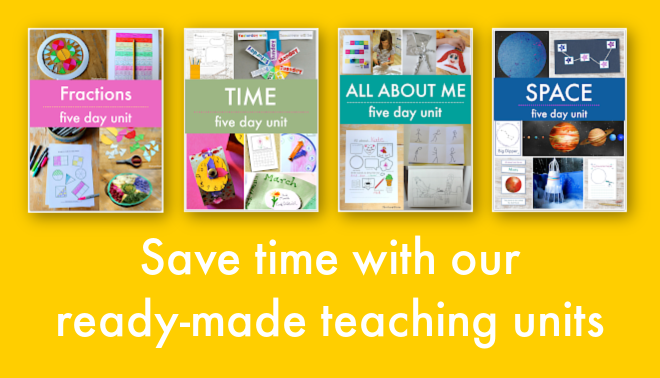What does a home school week look like? If you think home educated children lack socialisation, think again. Here’s a typical week in life of a home school kid.

What does a typical home school week look like?
Watch our Guide to How to Start Homeschooling
Click play on the video above to see our guide to how to start homeschooling. You’ll see the four steps you need to help you get started with homeschooling.
You’ll also find out about homeschool requirements and homeschool laws, and where to get ready-made lesson plans for homeschooling. Subscribe to NurtureStore’s YouTube channel to get more homeschooling videos!
There’s a common misconception that home-educated children are isolated from the wider-community and lacking opportunities for socialisation. I thought you might like to hear from a real home-ed kid and see what a typical week for my daughter looks like.
She’s 13-years-old, with a 10-year-old sister, and this is our fifth year of learning from home. She’s happy, healthy and thriving, and this article is published with her permission.
In a typical school my daughter would spend six hours everyday with the same group of same-aged children. I don’t think that would offer her much opportunity to experience the real world, mix with a wide range of people, or step outside her comfort zone into new social challenges. On the other hand, learning from home – or actually, being out in the real world – offers her a wide range of social learning opportunities.
Of course, home education is not for everyone. Some children are better off in school for a number of reasons, not the least of which being that their parents’ work commitments can make home education very difficult. We do choose to home educate though, and here’s what a typical week – this week in fact – looks like for my girl.
On Monday she’s at home during the day with me and her sister. Math and literacy work is done in a couple of hours in the morning. Because she has one-to-one sessions the learning is done efficiently and is tailored to exactly how her brain works. We follow a structured programme of maths which includes regular checking that she’s mastered the skills we’re working on before she moves on to the next level.
In the afternoon she’s free to dive deep into her own projects. She loves art and is independently driven to search out new artists for inspiration, and new tutorials to introduce her to new techniques. She’s working on her own YouTube channel to share her art with the online world.
In the evening she goes to drama school. This is a dynamic group of mixed-age children, both those who learn at home and learn at school, run by an award-winning director. She’s the oldest child here and gets the opportunity to contribute to the scripts and lyrics, and mentor the younger children. The group performs in our city’s community regularly through the year and runs an annual summer camp of inspiring group-work and creativity.
On Tuesday my daughter goes to a home-education meet-up at an adventure play ground. This is again a mixed-age group of children, with plenty of opportunity to play together, collaborate, be inspired by others and take care of each other. With a growing number of families choosing to home educate there’s often a new child here to welcome and get to know. This weekly group has also introduced a Lego club where the children will work in pairs and groups to tackle build challenges. After the group some of the children continue on to the local swimming baths, where they work on swim and water-gym routines – great peer-to-peer teaching.
On Wednesday we’re at home. Maths and literacy work is done in the morning and then in the afternoon we head out into the forest for a family nature hike.
On Thursday we have four home-educated friends round for a day of playing. My daughter then goes to a sewing club in the evening, for home- and school-educated children. Here she’s just joined a group with older teenagers, so she gets to experience being the new girl and making friends with people she doesn’t know so well.
On Friday we’re at home in the morning – more maths and literacy – and then we do project work in our home studio. We take part in a monthly children’s book club, and a family art club, so sometimes we’re working on projects for these community groups. Other times we’re enjoying the freedom to devote a whole stretch of hours to our independent projects, which might be art, science, history, or geography.
On Saturday it’s bedroom and laundry chores in the morning, and then Grandma, the girls’ aunt and cousin are coming round in the afternoon for some family fun.
On Sunday we head out as a family for a long hike somewhere in nature: the beach, the forest or up a mountain.
In between these my daughter will be Skyping or on a Hangout with friends, working on some collaborative creative project or chatting.
Close family and community connection
Rather than isolating, we find home education to be a fantastic mix of close family connection and time to meet with people who love the same things you do.
We benefit from mixed-age home education groups that gather together a wide range of families, as diverse as you’d find on the school play ground. Facebook makes it really easy to find which local groups are taking place near you. These groups have a much higher adult to child ratio than a school classroom or playground, meaning more adult mentors to model social skills with the children.
And of course we can join all the usual things, like Brownies, Guides, drama and other groups, that all children can, whether educated from home or at school.
More home education resources
Interested in learning more about home education? You can find my home education resources here. And pop your email address in the box below and I’ll send you my free Play Planner, a weekly update on creative kids education ideas.



